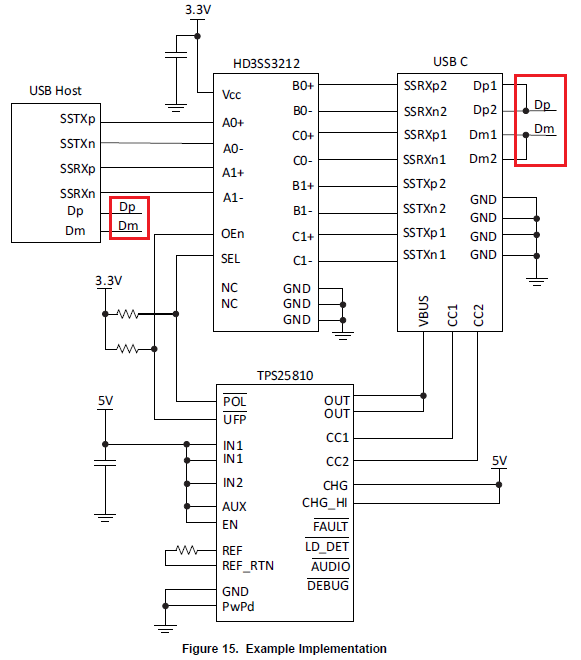Hi Team,
The following figure is example implementation in TPS25810 datasheet (page 18).
It shows Dp / Dm are direct connection between USB type-C connector and USB host.
Is there no need to put switch IC like TS3USB221 for USB2.0 (Dp / Dm) signal?
My customer concern that USB2.0 signal is established before USB3.1 that is connected via HD3SS3212, then application operates USB2.0 only.
I believe switch IC isn't required as Figure 15 shows, but would like to confirm just in case.
Best Regards,
Yaita / Japan disty
-
Ask a related question
What is a related question?A related question is a question created from another question. When the related question is created, it will be automatically linked to the original question.


